I joined a tour to North Caucasus from June 28 to July 12 and took an 11-day river cruise from St Petersburg to Moscow before the tour. This cruise is pleasant but nothing compares with my previous ten sea voyages. Nonetheless, I had a chance to learn more about the history of Russia before the 1917 Revolution.
Background
I have taken cruises on sailing boats, expedition boats and cruise ships with 500-2000 passengers. This time, I booked a cruise operated by VODOHOD the biggest tour operator in river cruising in Russia and my journey on ‘Zosima Shazhov’ would start at St Petersburg (SP) on June 15 and finish at Moscow on June 25. I would then travel by train to Vladikavkaz, North Ossetia to join the group from Hong Kong with a one-day stop-over in Rostov-on-Don. A perfect fit!
The journey from SP to Moscow by waterway is 1550km long. It goes through a series of canals, rivers (Neva, Svir, Kovzha and Volga), three lakes (Lake Ladoga, Lake Onega and White Lake) and the Rybinsk Reservoir. This waterway is actively used for oil and lumber export and as a popular river tourism route. From May to end September, some 700 boats go through this waterway bringing local and overseas visitors to Mandrogi, Kizhí, Kirilov, Yaroslavl and Uglich, the five most popular destinations.
June 14 Friday: Hong Kong – Moscow, Russia (GMT+3)
I flied with Cathay Pacific Airways to Moscow. My flight departed at 00:55am and I arrived at Domodedovo Airport, Moscow (DME) before 7am. As the airfare to SP would cost over 5600 rubles (RUB) and I would not be able to board the boat till the next day, I decided to take an overnight train.
I took the airport express train to Moscow and then the metro to Komsomolskaya. With the help of a Russian lady who speaks English I bought a ticket at Leningradsky Station in a 4-beded compartment for 2500 RUB. But the train would be leaving from Kursky Station. Another girl helped me to get a ticket from Moscow to Rostov-on-Don on June 25 for 3300 RUB. Then the ticket office told me to go to Kazansky Station for a ticket from Rostov-on-Don to Vladikavkaz. I cannot understand why I had to go to another station for an electronic ticket. Anyway, I finally bought a ticket for 2333 RUB.
By the time I got my three tickets, it was already midday. Kursky Station is one stop away by metro. But I took a taxi for 300 RUB as I did not want to carry my suitcase and walk a long way inside the metro. When I got there, I realised that it was the station where I began my Trans-Siberian journey in 2010!
I was tired but could not find a day or rest room in the train station. After dozing off in the waiting room for an hour, I felt well enough to set off for another task i.e. to find an air ticket from Makhachkala to Moscow on 11 July. Unfortunately the flight my group would be taking was full and I had to fly at 7am on July 12. The airfare for this one-way ticket is £153. Barring unforeseen circumstance, I should be able to join my group and return on the Cathay Pacific Airways flight around 5pm on the same day.
I spent several hours in a Starbuck surfing on internet. After a light meal, I boarded the train which departed at 9:47pm. There was a young man in my compartment. I slept well and got up just before arriving in SP.
June 15 Saturday: St Petersburg
The train came to a stop at 5:30am. I spent an hour in a pancake house at the station to have a cup of tea. I took the metro and then a taxi to the pier where I found my boat ‘Zosima Shazhov’. The receptionist kindly let me checked in early. I was in my room and had a shower before 9am.
There is a free shuttle to the nearest metro station. Unfortunately I did not see the shuttle bus stop as my taxi driver had taken me to the other side of the pier. I missed the 11am shuttle and the next one would be leaving at 12:30pm! I therefore had my first adventure when trying to find a local bus to the metro station. I cannot read nor speak Russian and it’s difficult to find my way outside the tourist area.
By the time I arrived in the city centre, it was about 12:30pm. I had been in SP at least six times and according to the cruise programme, there would be a city tour and a visit to the Hermitage. Hence I decided to go to the Russian State Museum and brought a combined ticket for 600 RUB for four museums.
Mikhailovsky Palace built between 1819 and 1825 for the Grand Duke of Mikhail Pavlovich, the younger brother of Emperor Alexander I. It is filled with masterpieces of icon painting, portraits, sculpture and 20th century paintings. The collection is the best I have seen so far in Russia. I learn the names of a few more Russian artists including I Repin, K Brullov, A Ivanov.
Marble Palace built by Count Grigory Orlov, a favourite of Catherine the Great (1729-1796) in Neoclassical style. Construction began in 1768.
St Michael’s Castle built as a residence for Emperor Paul I, son of Catherine the Great in 1797-1801. The castle looks different from each side. The Emperor was assassinated by a group of dismissed officers on 12 March 1801 in his own bedroom only 40 nights after moving into his newly-built castle. He was succeeded by his son, Emperor Alexander I. As this year is the 400th anniversary of the Romanov Dynasty, there is a special exhibition on the tsars and empresses. As usual, there is no English caption.
At 4pm, the sky darkened. I returned to the boat and attended a briefing for my group (Group 3) at 6pm and met Mil and Celia from Melbourne, Brian, Sue and Heather from the UK and Jerry from the US. (The next day, I met our guide, Irene, Lou and Paula from S Africa and a Vietnamese couple from the US). I was tired and had a good sleep.
June 16 Sunday: Saint Petersburg
There were 280 passengers on the boat. All passengers except those in Group 3 came with organised groups from the US, Turkey, Norway, Denmark, France, Spain and Germany.
Today, we had a busy day. The local guide briefed us on the history of Russia in general and SP in particular. Russian’s first dynasty was founded by the Varangian prince Rurik who established himself in Novgorod around the year 862 AD. The Rurikids were the ruling dynasty of Kievan Rus’ and founders of the Tsardom of Russia. The 700-years-old Rurik Dynasty came to an end in 1605 when Tsar Feodor II died without a child and successor. After several years of power struggle, a 16-year-old Mikhail Romanov who was then living at the Ipatiev Monastery of Kostroma was persuaded to accept he throne thus becoming the second and last imperial dynasty to rule over Russia from 1613 to 1917.
Romanov Tsar Peter the Great (1672-1725), whose reign started in 1682 and ended abruptly on his sudden death in 1725 succeeded in expanding the Tsardom into a huge empire. He was interested in seafaring and maritime affairs and determined to transfer Russia replacing the medieval social and political system with a modern, scientific and European-oriented one. Following victory over the Swedes in the Great Northern War, Peter the Great began construction of the Peter and Paul Fortress on the Zayachy (Hare) Island and found SP on the Neva River and at Gulf of Finland in May 1703.
Peter the Great moved the capital to SP which was Russia’s capital from 1713 to 1728 and from 1732 to 1918. During the reign of Catherine II (also known as Catherine the Great) from 1762 to 1796, Russia was revitalised and many grandiose palaces were built in SP which became Russia’s most Western, cultural and beautiful city. The historical centre of SP and some monuments constitute a World Heritage Site.
We set off at 8:30am had a 10-15 minute photo-stop at the blue and-white Smolny Cathedral (1748-64) and Convent built by Empress Elisabeth (Peter the Great’s daughter), the Church of the Saviour on Spilled Blood (1883-1907) where Tsar Alexander II was assassinated and St Issac Cathedral (1818-58), the largest Orthodox cathedral in the city built on the order to Tsar Alexander I.
The last stop of the city tour was the St Peter and St Paul Fortress, the city’s first stone structure. Construction began in 1703 and the fortress was intended to keep Swedish invaders out. It later became a prison for political prisoners. We had a guided tour to the Cathedral where most of the Romanov Royal Family members including Peter the Great and Catherine the Great were buried. We had a surprisingly good buffet lunch at the Moscow Hotel. I had a large portion of boiled fish which was fresh and most delicious.
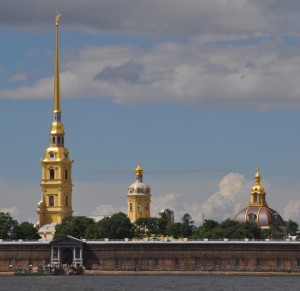 |
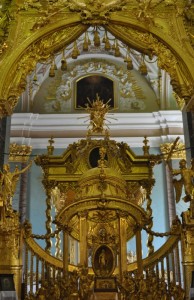 |
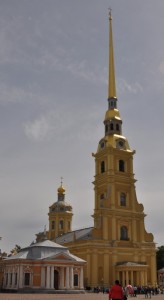 |
In the afternoon, we went to the world famous Hermitage Museum (the Winter Palace) which I have visited twice. It turned out to be a nightmare and the worst museum experience I have ever had. It was a hot and humid day and the museum was packed with thousands of visitors. The guide took us to see State Rooms- the Malachite Hall, the Royal Throne Room, the Great Banquet Hall, the Gallery of Heroes of 1812, a couple of paintings by Leonardo da Vinci, Raphael and Rembrandt.
The group departed at 4:30pm but I stayed behind in order to revisit the French impressionist gallery. The rooms were not as crowded and more airy as the windows were open. I particularly enjoy the painting by Henri Matisse and Paul Gaugan. I find the layout of exhibits in the Mikhailovsky Palace much better for viewing. I worry the painting and other treasures in the Hermitage would be damaged by the humidity brought thousands of visitors sooner or later.
I returned to the Nevsky Prospect to visit the Stroganov Palace. The management of the Russia State Museum is clever to introduce a combined ticket for four museums. Otherwise, I would never have gone to see the Marble Palace, St Michael’s Castle and Stroganov Palace.
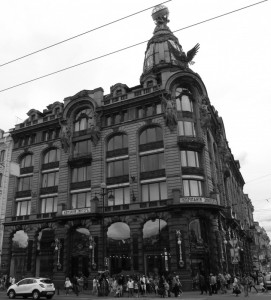 |
June 17 Monday: Beginning of River Cruise
I had an early start as I joined a tour to Peterhof and Pushkin Palace (3740 RUB). We set off at 7:30am and went first to the Pushkin Palace. We were the first group to arrive and had a good visit without other tourists. We also saw the lovely park. Russians love music and we were greeted by music bands and choirs whenever we went!
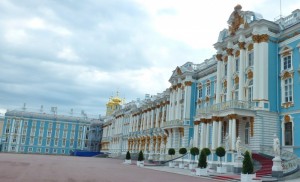 |
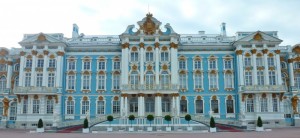 |
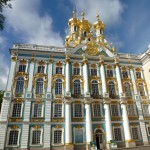 |
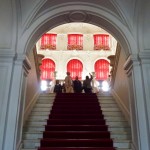 |
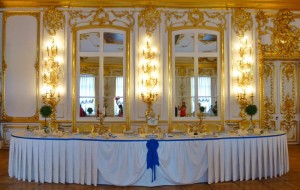 |
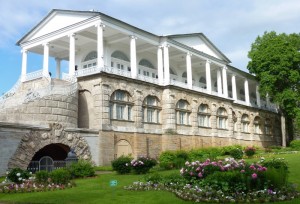 |
At 10:15am we left for Peterhof built in 1714 on the order of Peter the Great. It is sometimes called the “Russian Versailles”. The palace-ensemble consists of three palaces, hundreds of fountains and many gardens. We did not visit the palaces. Instead we spent over an hour and a half walking in the Lower Park which is the centrepiece of the whole ensemble. In the middle is the great palace, cascades and sea channel going to the Gulf of Finland dividing the park into eastern and western section. On the east side is the Monplaisir ensemble and on the west is the Marly palace. The area was extensively damaged during World War II.
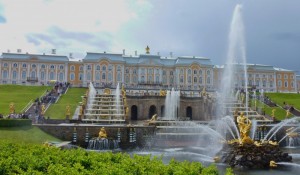 |
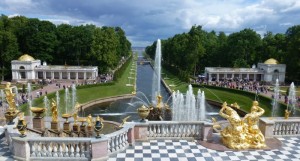 |
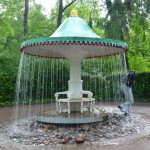 |
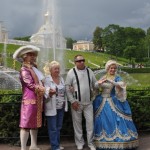 |
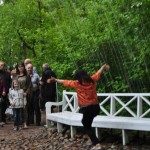 |
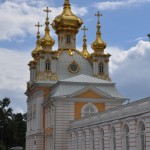 |
I had a wonderful morning. The coach was supposed to leave at 1:30pm. But as soon as we heard the first thunder and saw the sky turning black, we all rushed back to the coach which departed at 1:20pm. We were back on the boat at 2pm!
Zosima Shashov set off at 5pm and we had a Welcoming Cocktail followed by a safety drill. There was a welcoming concert followed by piano music in a bar and evening dancing. (Every night there was an entertainment programme with film show, singing, musical performances, piano music and dancing). The river was calm and I did not hear the engine noise at all. I slept well during the whole journey.
June 18 Tuesday: Mándrogi (11:30am – 2:30pm)
We passed through the first of the 18 locks before reaching our first stop at Mándrogi at 11:30am.
The village consisting of 29 homesteads was burnt down during the First World War and was rebuilt on old foundations of former constructions in 1996. Today it is a complex for tourists on the river cruise and holiday makers who arrive by road. There are a couple of hotels and holiday houses. Most of the wooden houses are souvenir shops and workshops for handicraftsmen engaged in weaving, embroidering, painting matreshkas (Russian dolls), pottery-making etc. I quickly had a walking tour before lunch at 12:30pm.
I find the place over-crowded and too touristy. I was told that 12 boats would be stopping at the village (i.e. about 3000 tourist a day!). For some odd reasons, I thought I should be back at 1:30pm instead of 2:30pm. I was tired and took a lap. I only discovered my mistake when I noted that the boat was still the pier at 2:30pm. Well, I do not miss much!
I had a busy afternoon on the boat. We passed through the first lock of the 1550-km journey. Then we passed the second lock. I saw Part I of a BBC film on “The Land of Tsars” and had a Russian lesson before dinner. The evening programme was full too. There was a folk concert followed by a piano performance in a bar.
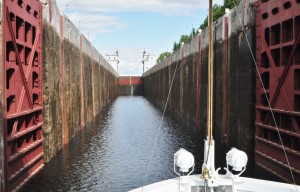 |
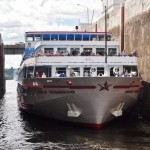 |
June 19 Wednesday: Kizhí (7:45am-12:30pm)
I woke up around 6am and saw our boat was already at the Kizhí pier alongside half a dozen boats. Kizhí, a World Heritage Site is an island on Lake Onega which has thousands of islands. Kizhí meaning “island of games” is about 7km long and 0.5km wide and has a beautiful ensemble of wooden churches, chapels and houses. In the remote past, it was a site of pagan practices. Following Russian victory over the Swedes at the Northern War, a 22-domed Transfiguration church was built in 1722 to commemorate the victory. A nine-cupola Intercession church was built in 1764 and a bell tower with a tent-roof was added in 1874. These structures were all erected without nails or other metal ties. St Lazarus”s Church moved from a nearby island is the oldest structure (built in late 14th century) on the island.
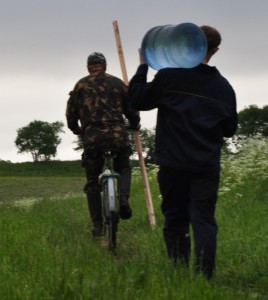 |
Our group tour would start at 9am. As the boat was already at the pier, I took a walk to see the other side of the island where the village is located. There is a well where many locals fetch the water. The local guide was good and I had a most enjoyable morning.
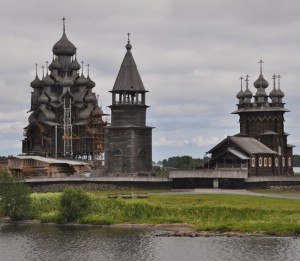 |
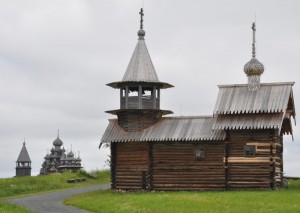 |
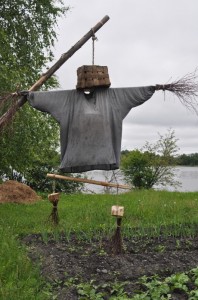 |
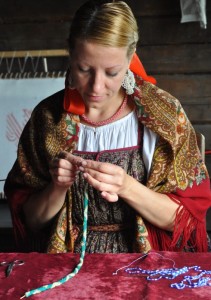 |
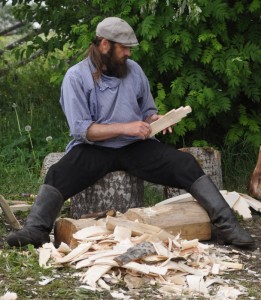 |
In the afternoon, we had a tour of the bridge where the captain told us about the features of the boat and navigation on the waterway. I then attended a Russian song lesson and learnt a popular folk song Kalinka (meaning snowball tree). At the Pirates’ Dinner, all those having their birthday during the voyage were given a birthday cake. So I let my secret out and everyone knew about my birthday!
The boat passed through two more locks and I watched the process with interest each time and took many pictures. The band sang well at the concert.
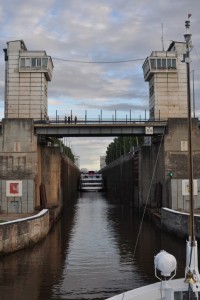 |
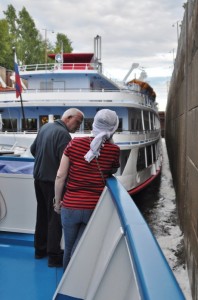 |
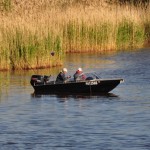 |
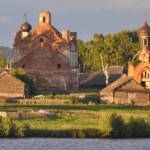 |
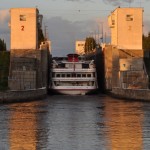 |
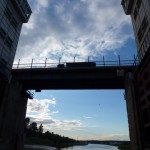 |
June 20 Thursday: Goritsi (3pm-5:45pm)
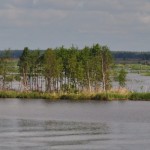 |
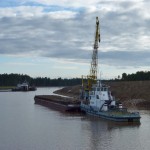 |
We spent most of the time on the boat and did not get off till 3pm in Goritsi, a charming town by the lake. We had a 15-minute ride to Kirillo in order to see the Kirillo-Belozersk monastery (also known as the Monastery of St Cyril on the White Lake). Kirillo was founded in the 14th century around the monastery which is the largest and most famous in Russia. We also went to see a museum with icons removed from the cathedral.
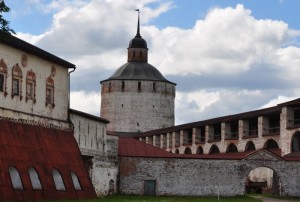 |
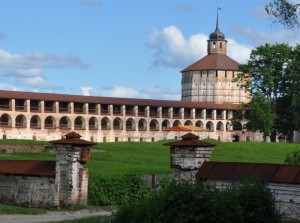 |
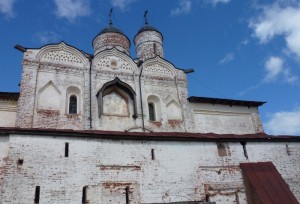 |
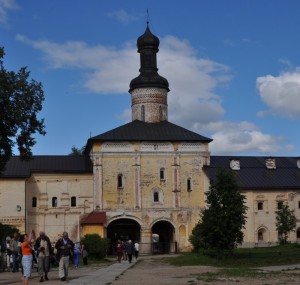 |
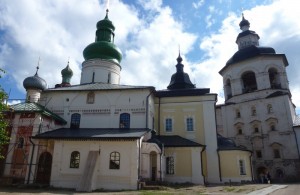 |
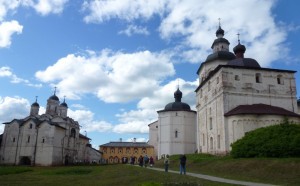 |
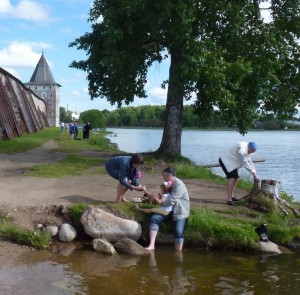 |
There is so much to see but we were told to leave at 5pm. I did not even have time to wash my face with water from the Lake which is said to make one look and stay young! We arrived in the pier at 5:15pm and had 30 minutes at the pier. I am not a shopper and would rather spend my free time in the monastery. What I had no choice and had to leave with the group.
The journey on the Lake was nice with excellent views of the dilapidated Church of the Resurrection of Goritsi Nunnery and beautiful houses on the lake shore. The guide told us that a small piece of land would cost over a million rubles.
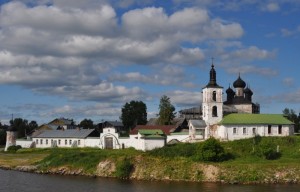 |
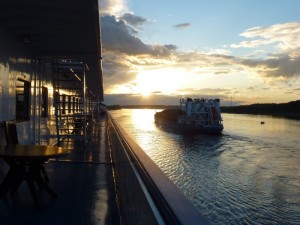 |
There was a concert in the evening and the band played some popular classical music including Lara’s song from Doctor Zhivago and Russian Gypsy’s Romance ‘On the Long Way’.
June 21 Friday: Yaroslavi (5-8:30pm)
In the morning, a traditional tea ceremony was performed. We only arrived in Yaroslavl at 5pm. The city is 250km from Moscow with a population of 600,000. Founded during the reign of Yaroslavl the Wise in 1010, Yaroslavl is one of the oldest Russian towns. By the 13th century, it became an important cultural centre. By 16th century, it also became an international trade centre following Russia’s conquest of Kazan and Astrakhan khantes thus opening a free way to Asia along the Volga. Traders from England, Germany, France, Spain and the Netherlands arrived. The first Russian theatre was founded here in 1750 by Fyodor Volkov and the city boasts a wealth of 17th century architecture.
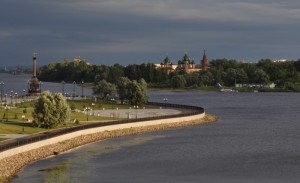 |
 |
 |
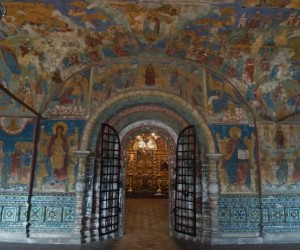 |
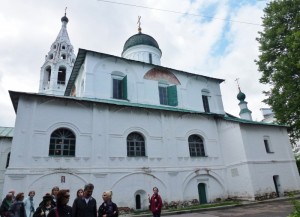 |
We boarded a minibus for a city tour. The first stop was the city centre where we had almost an hour free time. I looked around and went to the Church of St Elijah the Prophet which is now a museum. This 17th century architectural monument has carved window plat bands, brightly-painted arched portals and elegantly designed porches. The frescoes are most beautiful! The local guide had not mentioned this church and I am glad my curiosity has taken me to this outstanding example of Russian 17th century architecture masterpiece.
The next stop was a family church built by Fyodor Volkov which is now a museum. A choir then sang us the song ‘Vogla Boatmen”. (I do not understand why the local guide did not take us to the Church of St Elijah which is older with beautiful frescoes).
Our last stop was the Governor’s house built for Tsar Alexander I on his visit to the city. It is an elegant palace with painting and furniture. At the end of the tour, there was music and dance performance. We had a glass of champagne as well. Yaroslavl has been on my list and I would like to spend a day or two in this lovely town. This time, we were not taken to see the famous ensemble of Transfiguration Monastery.
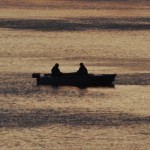 |
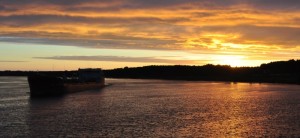 |
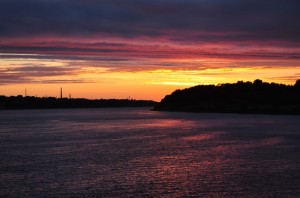 |
June 22 Saturday: Uglich (10am-1:15pm)
Uglich dates back to 937 AD. After the death of Ivan the Terrible, his youngest son Dmitry was banished to Uglich in 1584. On May 15, 1591, Dmitry, the last scion of the ancient Rurik dynasty was found dead with his throat cut in the palace courtyard. But the official investigators concluded his death was an accident! The Romanov tsars canonised the martyred Dmitry and turned Uglich into a place of pilgrimage. The Church of St Dmitry on the Blood with red walls and blue domes was built. We visited the Transfiguration Cathedral and a museum where a choir sang the “Volga Boatmen”. After the guided tour, we still had over an hour and a half free time. I strolled around, visiting a couple more churches and looked at the dilapidated town centre. Construction of the Uglich reservoir ordered by Stalin has caused severe flooding of the town’s outskirts.
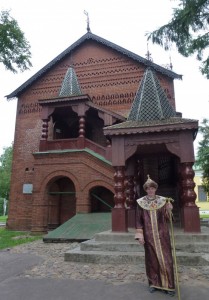 |
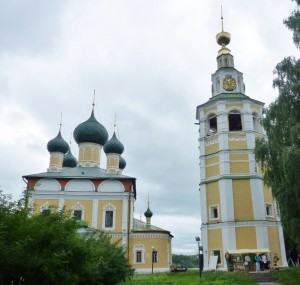 |
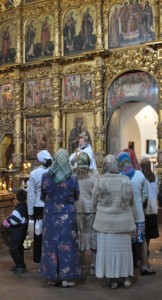 |
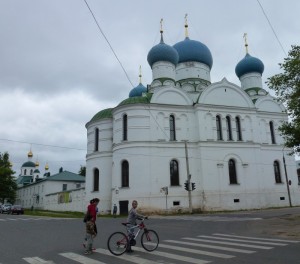 |
I brought a bottle of Romanian wine and chocolate from a supermarket. At the Captain dinner, Paula, Lou, Mil, Celia and I finished the bottle. Then Paula treated us with another bottle of liquor (Amarula) brought from S Africa. So I had a lovely birthday party on the boat!


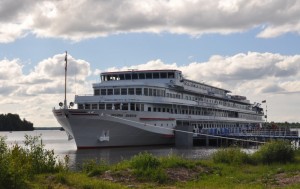

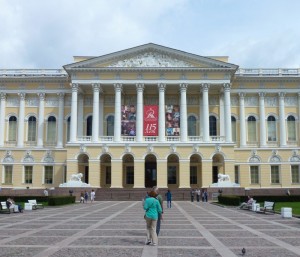
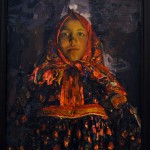
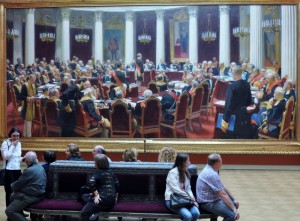
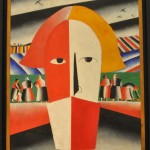
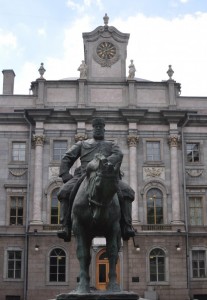
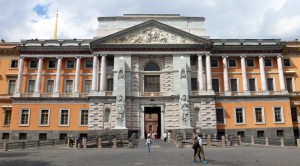
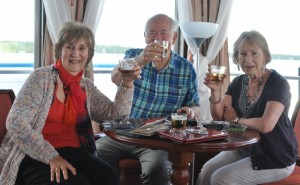
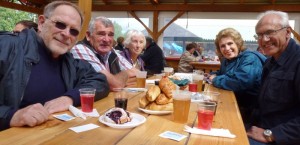
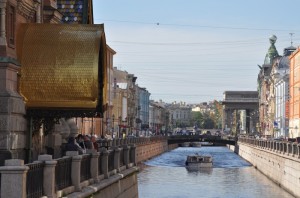

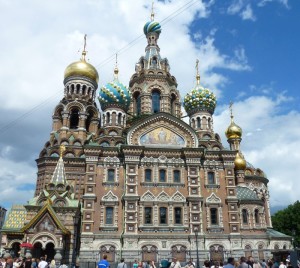
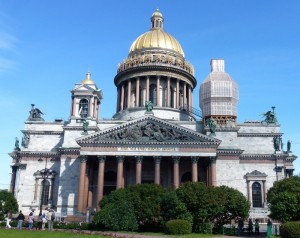
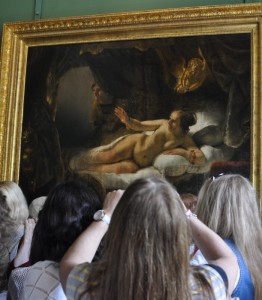
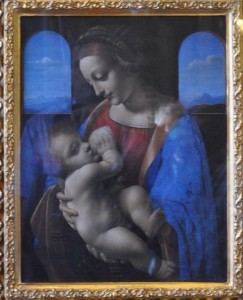
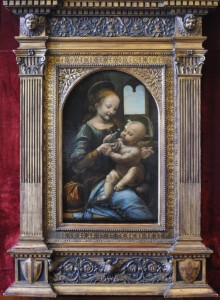
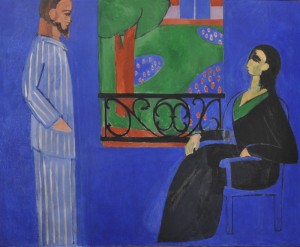
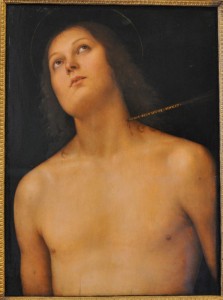
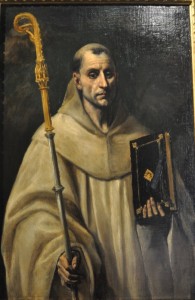
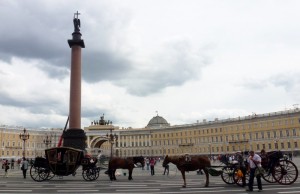
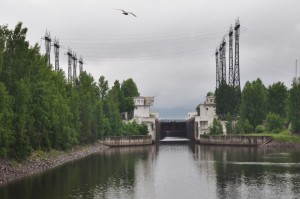
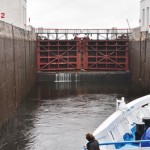
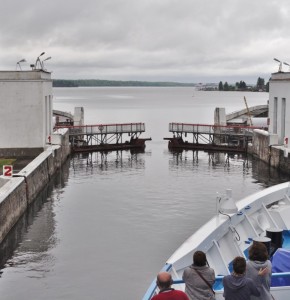
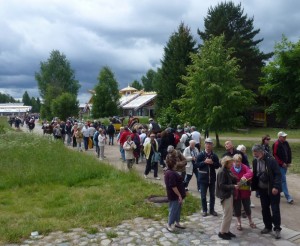
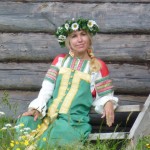
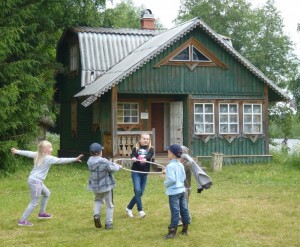
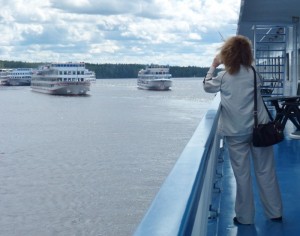
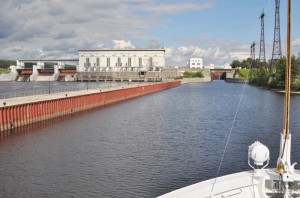
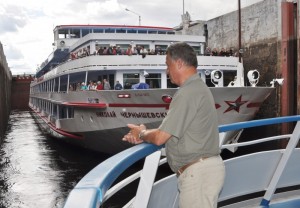
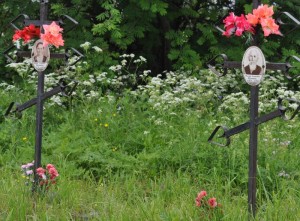
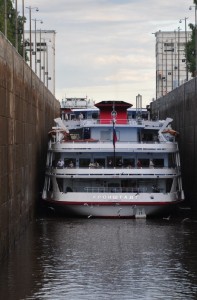
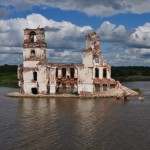
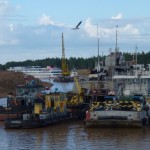
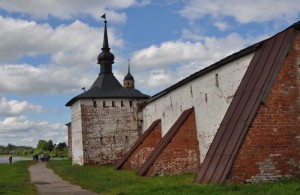
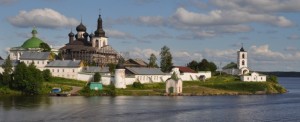
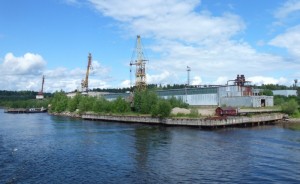
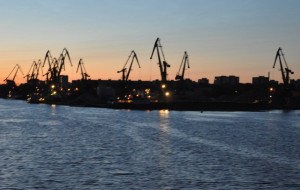
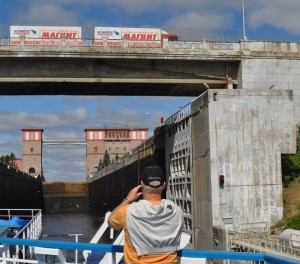
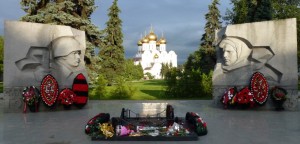
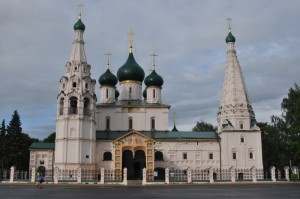
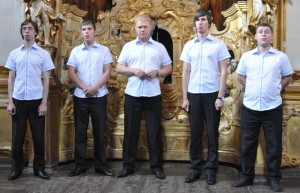
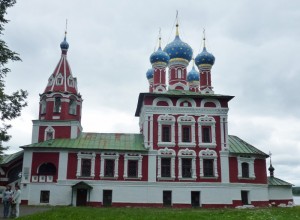
hi, Sarah (still remember me???, hahhaha)
suddenly remember your trip, see where you are now ^^
so great that you finish your Japan trip
you are so great to travel so long long time la
enjoy yr trip and take care^^
tell us when you back HKG^^
Hi Sarah
Just returned home and rather good to have space in the bathroom after on board facilities. Looking forward to hearing about your further travels around Russia. Hope all goes well and you enjoy it. We were lucky enough to get upgraded on the flight home so more caviar!!
All the best – Sue and Brian
Hi Sarah, it was great meeting you. We had a good time with you and with Mal and Celia. All the best on your next trip!
Hi Sarah,
My sentiments exactly,was great to meet you,and also Lo & Paula,I thought we all had a great time,hope your travels are still going well. If you have Lo & Paulas email address could you forward it to me please,seemed to have misplaced it.
Cheers Mal & Celia.
Hi Sarah,
great to see more of your images from the Russian River trip,we remember it well,good to see your still tripping around enjoying yourself. Love looking at all your posts.
Cheers again Mal & Celia.